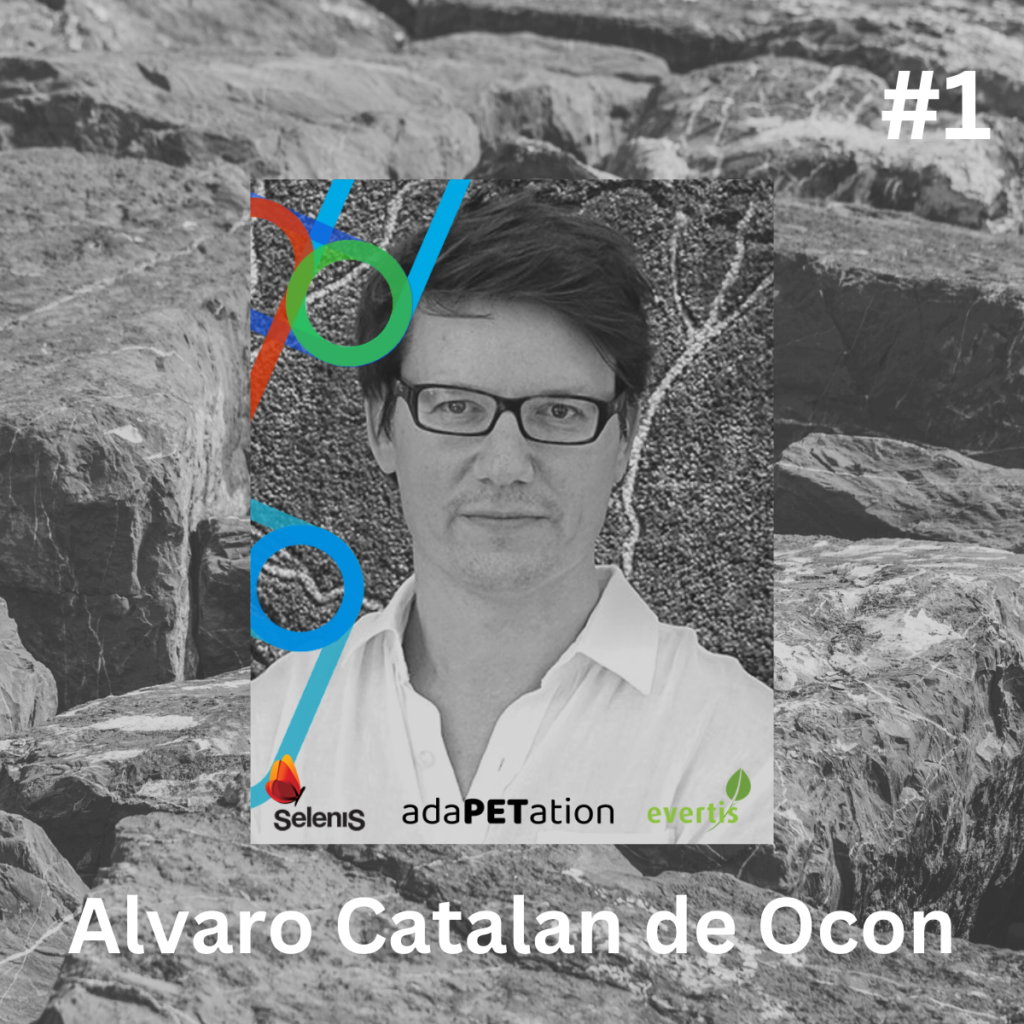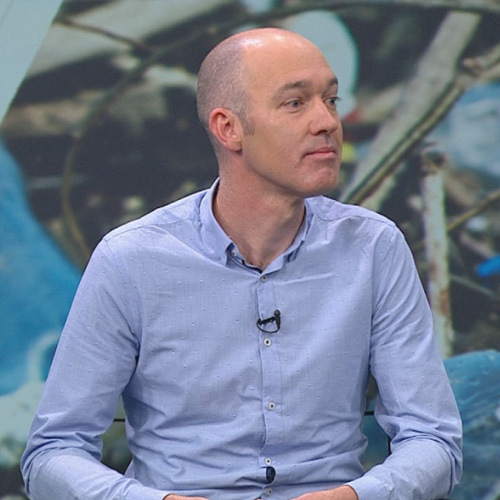
Shining a light on the designs of Álvaro Catalán de Ocón whose social initiative - PET Lamp and Plastic Rivers - are raising awareness around plastic waste and empowering women around the world.
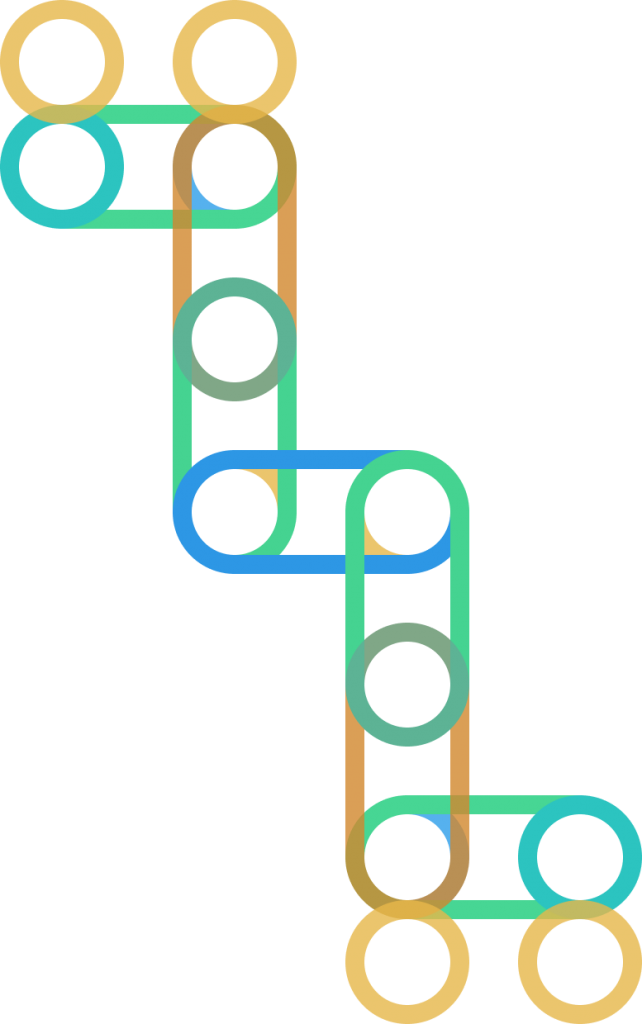
Álvaro Catalán de Ocón (ACdO), the founder of movement that reflects and questions the world around us through design, has been showcasing recycled PET for more than a decade placing the material in the talented hands of talented artisans who weave PET bottles a beautiful second life with a powerful message.

In May, his socially-conscious design initiatives – PET Lamp and Plastic Rivers – joined up with plastic producers, collectors, recyclers, designers and consumers in New York to put PET at the heart of the NYC x Design Festival starting an important discussion about a common goal: closing the PET plastic loop.
The Spanish designer and his talented team of artisans created a unique installation for the world’s most important design festival shining a light on two important themes in contemporary design: honoring ancient traditions and sustainability.
As well as highlighting the importance of recycling, ACdO invites indigenous wisdom into the 21st century conversation about how the human species can weave itself harmoniously into the earth’s fragile ecosystems and work with the planet’s finite resources.
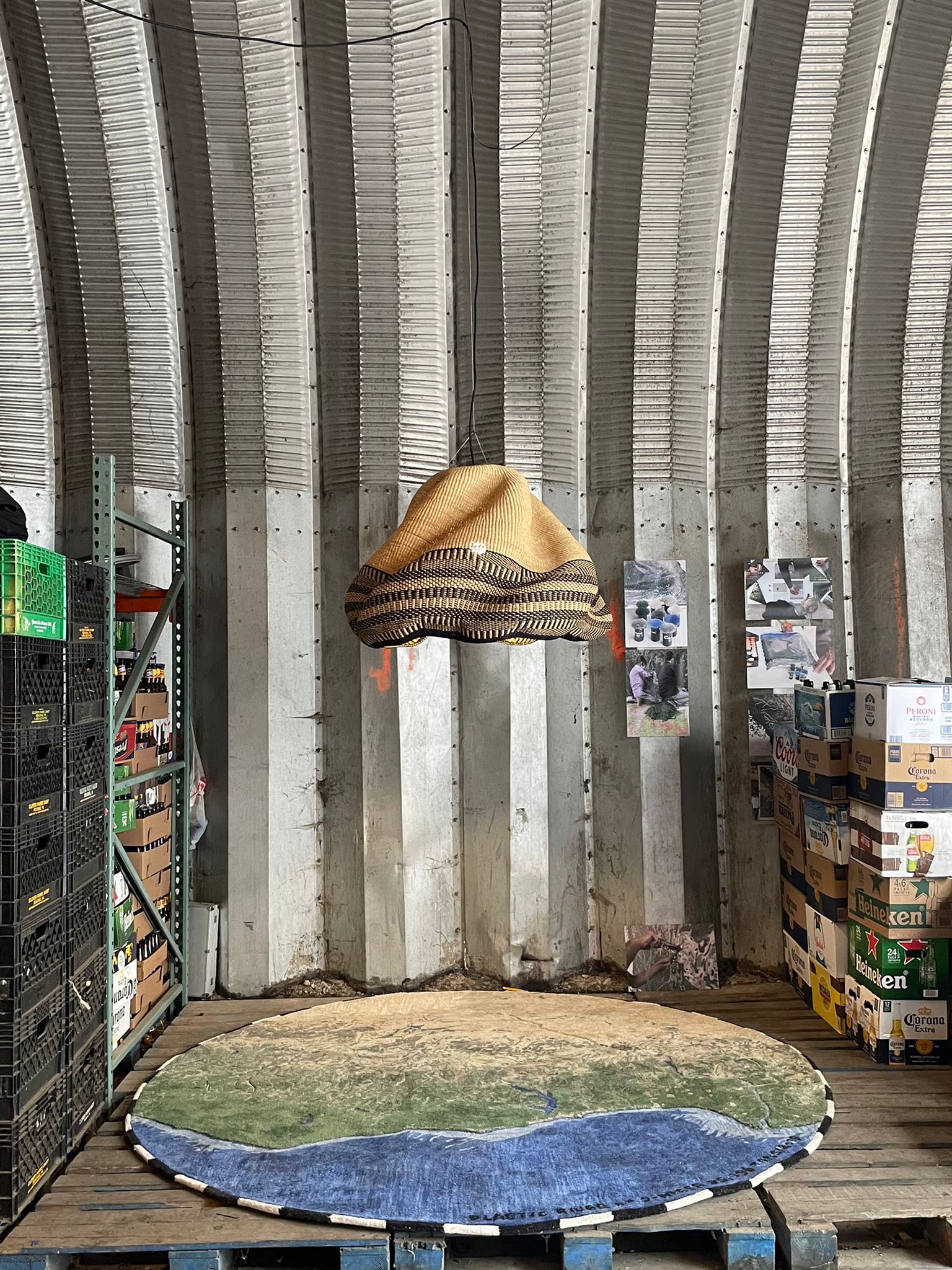
His Plastic Rivers collection of rugs, handmade by artisans in India, are weaved with recycled plastic yarn. The rugs depict aerial images of the most plastic polluted rivers on Earth.
This project is a manifesto that conveys a critical perspective on plastic pollution, especially in rivers and oceans due to the global commercialization of waste from rich to poor countries. PET Lamp is an international social project, present in seven different countries that reuses plastic bottles and transforms them into lamps, restoring discarded materials into reusable, valued objects.
PET Hero #1, Alvaro Catalan de Ocon (ACdO)
AdaPETation: Could you introduce us to PET Lamp and how you came up with the project in 2012?
ACdO: PET Lamps happened in a very kind of way. It was like a spark, in an instant. I was on holiday in Colombia, in Bogota. My daughter is half Colombian, so I was in a relaxed state of mind, which probably is when ideas come out. I was talking to a friend of mine, an artist , Luis Carlos Tovar, who was doing a project in Bogota at that time to create consciousness around the plastic waste in the Amazon River. And he was also working together with an architect, with a landscape designer, and they wanted to also have the perspective from industrial design on how to turn bottles or create consciousness. Not that shout out on that problem, which was starting to happen at that time. Now everyone is talking about it, but at the time it was something quite new and they were talking about the seventh continent, floating islands of plastic, floating in the middle of the oceans. So it was about not so much resolving the problem, which is a bit too big for this kind of actions, not the single actions, but especially to spread the word no and get it to be heard by as many people as possible. So I thought about how I was inspired by the twist from the ceremony of the Tea in Japan, which is a very simple object made of one piece of bamboo. And it’s kind of very similar to a plastic bottle. You know, if you kind of abstract the shape of it, you can then understand that if you cut in stripes the bottle and you can weave on to that structure and turn a plastic bottle, change the shape of a plastic bottle into something else. So I thought about working with artisans instead of industry as, as it’s, it’s richer in Colombia and there are many different cultures around the whole country. And each one expresses itself in a very particular way through crafts and music. So I wanted to work with crafts, and I also wanted to work not with recycling, which requires quite an industry, quite an infrastructure around it, but around reusing or upcycling. So in bottles, in PET lamps, you actually see the bottle, it’s there and somehow it becomes like a manifesto. It’s an object which shouts out, it can be understood by itself. No, you see the bottle there. So there’s no mystery about it. And it was then going to different cultures around the country to turn those bottles into lamps. We presented that first collection in Rossana Orlandi in 2013 and it was a great success. It came out very fresh. It was collaborating with craftsmen, which wasn’t so common at the time. It was more like industrial processes and it wasn’t so much about self production or makers. It was more about collaborating with companies to make objects. Now, this was just after the crisis. We started as designers to start to think in a different way about how we could actually do it ourselves. With the Internet, we could communicate worldwide, we could distribute worldwide. So it was like we were experimenting with some tools which we didn’t have so easily before. So all of these were the seeds, which then grew into a bigger project. Now after presenting the Colombian collection in Milan in Rossana Orlandi Gallery, we then moved to Chile and thought about working with some artisans from Barunga, from another area, working with a different kind of fiber. And it came out with a very different collection from the Colombian one, which was very gratifying, not because it also expressed the style of the country and the personality of the weaver. So we started to see that actually it was a project which could be taken worldwide and have it like not just a design project, but also like a study case around fibers, weaving techniques, cultures, languages and so many different things. Actually, textile is a language previous to writing. So it’s a way to actually express many things. So this way we were filling the object with different layers of understanding. We then went to Ethiopia. After Ethiopia we went to Thailand. Then we went back to Chile, working with Mapuche. Then we went to Japan, then we moved into Australia where we worked with a community of Aborigines, weavers from Arnhem Land in the beginning which was probably the most extreme experience we had so far. And this last year, the most recent one, we went to Ghana and we made some incredible baskets which take like a month to weave and they are quite spectacular. So it’s a project which actually has its own life, its own. It’s like surfing the waves. No, you let yourself just go. No. And it takes you to different countries, different cultures. We always work also with a very social background. So for example, in Colombia we were working with weavers which were displaced by the war. They were originally from the Cauca region and then they were displaced in Bogota. So it was also giving them the opportunity to actually express themselves and bring to the city all their knowledge and be able to live from it. Now it’s becoming like an economy for all of these weavers. Now, we have probably already made 25,000 lamps. So it’s become quite a thing for these groups of weavers. Then in Ethiopia we were working with a group of weavers which were mothers of twins, which was also quite a difficult thing in the area and it’s a bit stigmatized now, having two children and raising them. So weaving is also something which is very linked to women and it’s like a way to have a second economy in the House while you can be taking care of your children. So it has all those kinds of connotations which makes it very special, interesting.
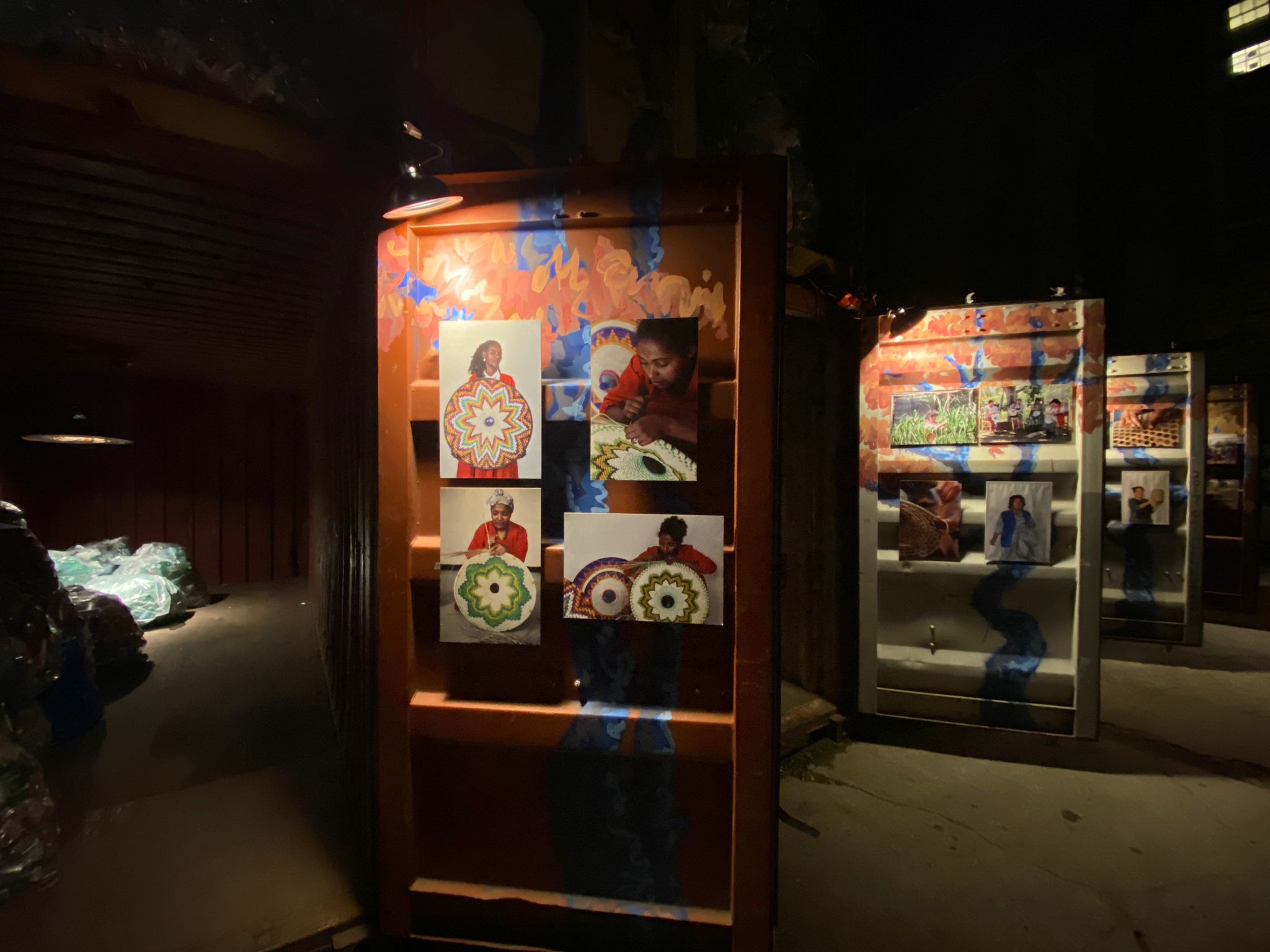
AdaPETation: What have you learned about the plastic industry as part of this journey that you’ve been on for the last ten years? How have your views of the industry changed or not over that time?
ACdO: Well, in the United States, what we realize is that it’s the company who has to take care of that bottle. So it makes it more complicated, not because then the company has to pick up that bottle. In Europe, it’s the government who picks up the bottle. So you have these containers in the streets where everybody throws the rubbish to the different containers and you do the work of separating the rubbish. So you take a glass and you’re trying on a container, you take the plastic, all the plastic, and then you take the paper and the container and all that goes into one same place. Which is more efficient in a way. And then also. In Europe, we are kind of more conscious about this. Having to do it yourself at home makes you conscious about dealing with your rubbish. It’s not like you throw everything into one place and then someone else is going to deal with that. And plastic, plastic rivers are actually dealing with that problem because all of that rubbish was just being picked up and being shipped into other countries like China, India and Nigeria or the Philippines. Now, where rubbish is becoming kind of a mining space, it’s a place where you pick up what you’re interested in because there are a lot of valuable things in rubbish, a lot of valuable materials. You can decompose pieces and like computer pieces and bring up some very valuable metals and very valuable plastics and so on. And the problem is that those countries, many times, don’t regulate what they do with the materials, which they are not going to use, that they are not going to recycle. So what they do is that they actually throw it into the river or the rains just wash them into the rivers and there is no regulation around it. So all those plastics are then being washed to the sea. Those rivers are like highways of plastic, no, washing all that rubbish into the ocean. And that’s when it creates these problems of concentrations of plastic, which is actually going to stay there forever because plastic does not decompose, it just accumulates. So in Europe, for example, now companies are obliged to use 30% of recycled plastic in their plastic objects when they manufacture with plastic, which makes recycling plastic more expensive than new plastic. Which is encouraging. It encourages companies to really recycle because you really have to take care of that material, which is a leftover, but it has a value. And I also think that what I learned is that the big problem with plastic bottles is that the price and the value does not match. I think that it’s an extremely valuable object, but it’s priceless. Now it’s nearly worthless. You pay for what it contains, but you are not paying for the container. If you had to bring out petrol from the earth to make plastic, then that material would be much more precious and people would see it like a precious material, but instead it’s a leftover of the petrochemical industry which makes petrol and so on. So I think that that’s a big problem with plastic. We are using it as an object which is going to be used for 10 minutes, but the material is going to last for centuries. So really there is this big contradiction which makes no sense. So we should think about that material like PET, for example, which is very recyclable. You can recycle it over and over again and it doesn’t lose properties. So it really is a barbaric thing to throw it into the river and then into the sea. It’s going to stay there. And then all of these virgin spaces of the world now, which we believe are the very deepest areas in the ocean, are actually filled with rubbish, which is not going to decompose because you don’t get anything there. You don’t get the sun. You don’t get any. So it’s. It’s like. We are creating a big problem for the future. And all of this is also in great part because of the comfort culture we live in now. It’s very comfortable for 10 minutes, but it’s going to be very uncomfortable for centuries for this for the world. And that’s kind of the big problem which we are building up and which we need to radically find a way to stop it, no? It’s like when you have a leak in the kitchen. You are not just moping and mopping and mopping the water. You go directly to where the leak goes, which is fixing the tap. And then once that you fix the tap, then you start washing the water. But here we are doing the opposite. You are just washing the water, you know, and we can stay like that forever unless we take a decision to really close the tap and start producing plastic in a responsible way.

AdaPETation: As a designer you are constantly thinking about how to make the world better. How can design help us transition to a new world without waste?
ACdO: Yes, well, I think that design is not just about making objects. It’s not just about the object. No? We also have the capacity to communicate. We have the tools and the channels to communicate in a very powerful way. So that’s our responsibility, not just to think that as a designer, when we make a decision, that decision might be replicated 1,000 times or 10,000 times or 100,000 times. So when a designer chooses a material, has a responsibility to do it correctly, which is going to influence. Many times it’s a decision which then is going to be multiplied exponentially, but also this communication aspect of design. Now, I think that products can become manifestos now and manifest, which are telling a story which is relevant for today. And this happens, for example, in music. Now you like protest music or you have protest literature or you have protest theater or not. When you are talking about design, it’s difficult to think that a chair is going to be a protest. No, it’s not. When you think about music without words, it’s hard not to listen to classical music. Give it a protest aspect of it, a protest site. But I think that design now is starting to understand that we also have that kind of power in a way. So these projects in particular, these two projects, try to bring that aspect of design as far as far as possible. So Plastic Rivers, for example, are wrapped in a company that came to me wanting to design something with this material which is recycled plastic. And when they sent me the sample. It really didn’t look like plastic. It felt and looked like wool, you know. So the idea was instead of just doing a carpet with a fancy drawing on it and thinking about the object telling the story and the origin of that material. So that’s why they are rivers and that’s why they try to document what’s happening around those plastic waste. And it tries to do it in the most objective way possible. Now it has the scale of the map. The map is taken from Google Earth. It’s written with some data on it, which is real data, which has been researched on a certain date, which is on the carpet as well. So it tries to document what’s happening. And it’s an object which also tries to be beautiful and decorative and tries to be sellable and functional and ergonomic and so on. But as well, giving that manifesto aspect to know that it’s going to tell a story which is relevant and it can spread that story. And then at the same time, I think that if we want to change how we are doing things with waste, we all need to make a decision. It’s not just this as a designer, but it’s also us as a private person, and the same should be with companies and governments. I think that for the first time we are realizing that this climate change has been probably provoked by humans and it’s a global response which is needed. It’s not just individual responses, but global responses. And we need to do it from our individual lives to our professional lives, to our country lives, how we deal with our country and how our politicians are representing our will. No?
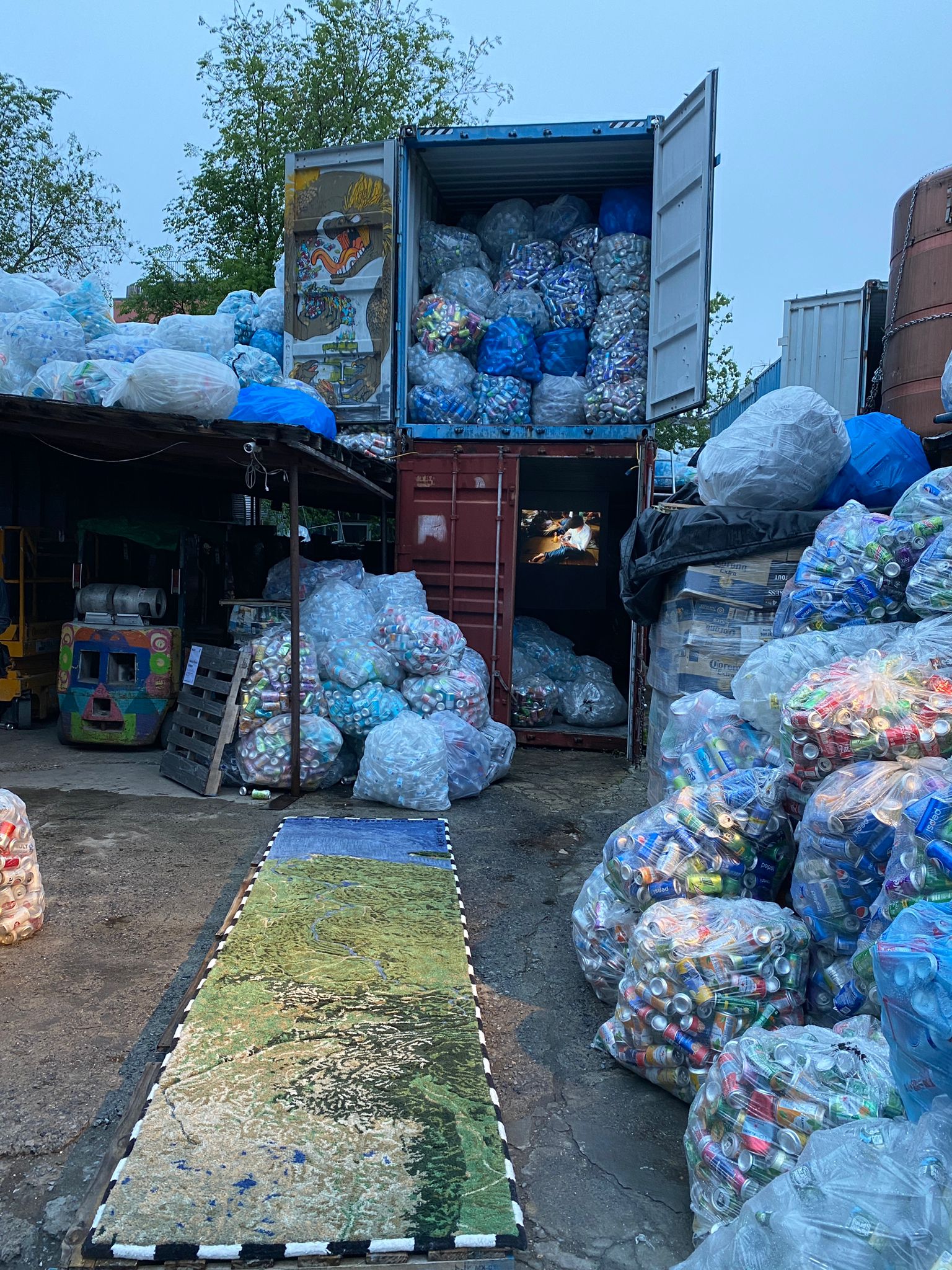
AdaPETation: How does your initiative help us in practicing what Daniel Wahl refers to as social acupuncture?
ACdO: Yes. Well, I think that. PET Lamp and plastic rivers, which are made in India, are kind of the beautiful side of globalization. It’s certainly receiving an email from Emma Weaver in Madrid. No, I’m able to fly there, do a project, show it in Milan, and then sell it worldwide and spread that culture and that message. And it’s so beautiful. I think it’s really the most beautiful side of globalization. And somehow it allows everybody who’s involved in the project to, how would I say? He puts your I mean, I think that that trust in the local market doesn’t work as well as if you put it in Milan. It’s when you displace that culture, when people become more aware of it now, the problem becomes more clear because you have the distance and you have the surprise and so on. So I think that that is, as you say, a way of creating a channel that you put like a little spark in Chile, which you are taking that spark to Chile to to Milan, and then that little spark to whoever has bought it and is putting it in a hotel in Bali, I don’t know. And then there are hundreds of people entering that space and seeing that lamp and wondering where, how it’s been done. So I think that that’s the magic of maybe these last years of globalization. And I think that it’s a good way to make use of it, to spread a message, which is. A message of hope? In a way, no, because I think that one thing that Vietnam has is that it’s a friendly project. It brings light to your spaces, it brings color and brings now a positive message. And I think that that’s also important because there’s been too much negative ness around climate change and like nothing is possible and we are lost now. And this is like a kind of an apocalyptic era in which we are. But I think that we need to spread it from a positive perspective, and that’s when we are maybe all going to be willing to make a change.
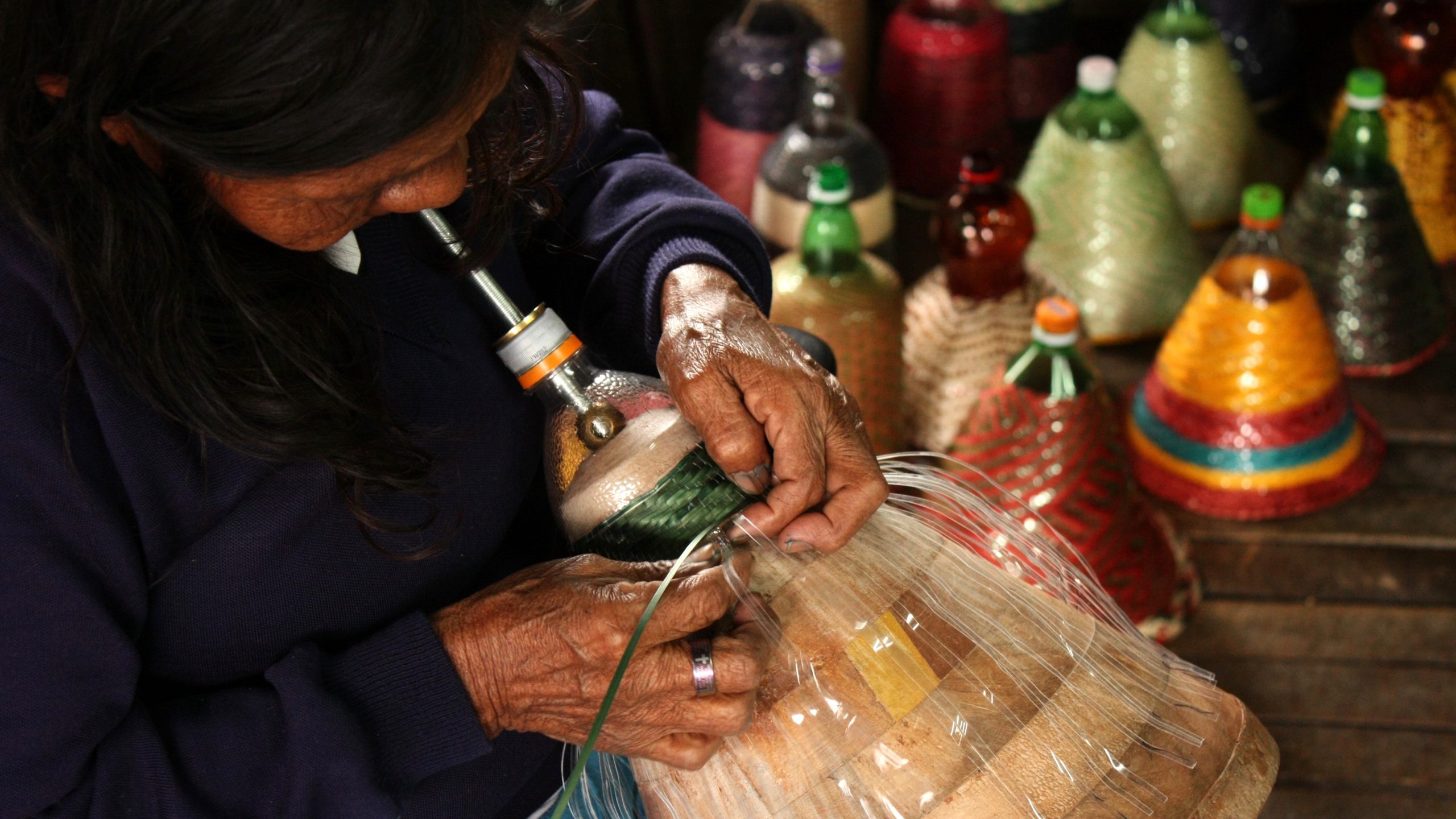
AdaPETation: What lessons have you learned and how can you share those with others in terms of this idea of sustaining these networks of hope?
ACdO: Ten years ago, it was kind of difficult to find people thinking in these terms, but now there is a kind of global awareness, certainly. And there are groups of people who are willing to make a change now. And we found it in AdaPETation. We found it in New York. We found it in different groups of artisans worldwide. We found it in the National Gallery of Victoria who asked us to show our project in the museum now and spread the world there and then make one in Australia. And we found that same message in Rossana Orlandi, who has a price around plastic and tries to not make plastic. The guilty element of the whole thing, though, is plastic is a marvelous material if it’s used properly. Now, the thing is that we are not using it properly. So that’s a kind of another message which is kind of starting to flow in a way, you know. So I think that there is now much more consciousness around the world. There’s many more. Spreading in different areas. So I hope that in ten years time we will be much ahead than we are nowadays and people are going to be really conscious about it because we can be very conscious in Europe and in other places. What if China and other big countries like that are not aware? They haven’t got the same awareness, then it’s not going to work. And I think that little by little it is what we are getting. I mean, when you hear children, ten year old children, 15 year old children, they are extremely more aware than we are. When you hear our grandparents say they weren’t at all concerned with this problem it didn’t exist for them, they had other problems in mind. So you do realize that there is slowly building a big change, and I hope that it will stay. I mean, I remember I always tell the kind of similar situation where I remember when I was a child, people were smoking in the airplanes. That’s something which nowadays is like completely out of the box. Now I’m thinking that I’m going to light a cigarette in my airplane or my teacher is going to be smoking while he’s teaching me math, you know, in school. But that was happening 30 years ago. So hopefully in some years we will have a completely different approach towards waste and plastic.
AdaPETation: We’ve made you a PET hero but I’m sure behind your success, there are many other people that you’d like to share that spotlight with. Are there people you’ve met on this journey over the last ten years that give you hope, other people that you could share with us?
ACdO: Especially all the weavers we work with, which probably we’ve been working with 70, 60, 70, 100 weavers because we work with a small group and then it spreads and they bring up there and the sister, the grandmother, and it becomes like a big community. But it’s thanks to them that all of this is possible because it always amazes me how flexible they have been that they can pick up a bottle, cutting the stripes and wave with it and apply their traditional techniques onto it. And they don’t ask questions like, you know, when you do that in Spain, it doesn’t work. Then you go to a carpenter and he says, no, no, I work with oak, don’t bring me pine because I don’t work with that kind of wood, you know. But these weavers are working. For centuries in a certain way. And certainly they said, yes, okay, let’s go for it. I’ll try. No? So that’s really the most permeable, people we’ve worked with now in the home team because also this is a big team. It’s a reverse of the first and the first piece of the puzzle, but it’s an enormous puzzle which has to fit. But I’ve always been amazed with also generally they are indigenous weavers and I’m always amazed with their openness. To someone who is arriving from Europe, from Spain, who’s a designer now in a different language. And it’s like, let’s go for it.

AdaPETation: Do you have any plans to go off to other countries? I mean, where do you see this going next?
ACdO: Well, we’ve done the project already in every continent. So I don’t think that it’s more about spreading. Now we go to other countries and it’s becoming very complicated with all the logistics and so on now. So I think that at this stage we are thinking more on returning to the countries, to the same movers and keeping that contact more alive and closer and keeping because what we really don’t want to do is to go to a place, develop the project and then leave and leave it with no continuation. So I think that at the moment, it’s the best moment actually. Create a stronger bond to the country, to the weavers, to that culture, to keep it alive as much as possible and not spread it even more and maybe lose strength and contact with the Weavers we’ve already been working with. So we are willing to go back to the countries. In fact, Gregorio Hildebrand, who was the person who invited me into AdaPETation, his father runs a foundation in the Amazon, which is incredible. He’s created like a green corridor across the continent to give local cultures their own laws and their own way of dealing with their problems and their lives independently from the country where they come from. It’s more the culture where they become, which is actually what rules them. So it was interesting to maybe develop a project with that foundation in the Amazon, which is the Gaia foundation with Dear Wise Earth and maybe go back to Colombia, get back to see the weavers again. We’ve done it a few times, but I would like to carry on doing it more and more.
VOTE FOR ALVARO CATALAN DE OCON
Want to show your support for the amazing work being done by Alvaro Catalan de Ocon? Take a minute to show your support for him and the PET Lamp.
NOMINATE YOUR PET HERO
Tell us what you think of our list of PET Heroes 2023 and recommend inspirational leaders coming up with the best solutions to systemic issues surrounding plastic.
Share it
The Other PET Heroes & Useful Links
THE HISTORY OF PLASTIC
Throughout the history of plastic, PET has been crucial in keeping food fresh with lightweight and durable packaging solutions that have helped reduce food waste for almost a century. Learn all about the invention of plastic and the important role it has played feeding people and saving the lives of humans and elephants in the adaPETation® timeline of the history of plastic.
